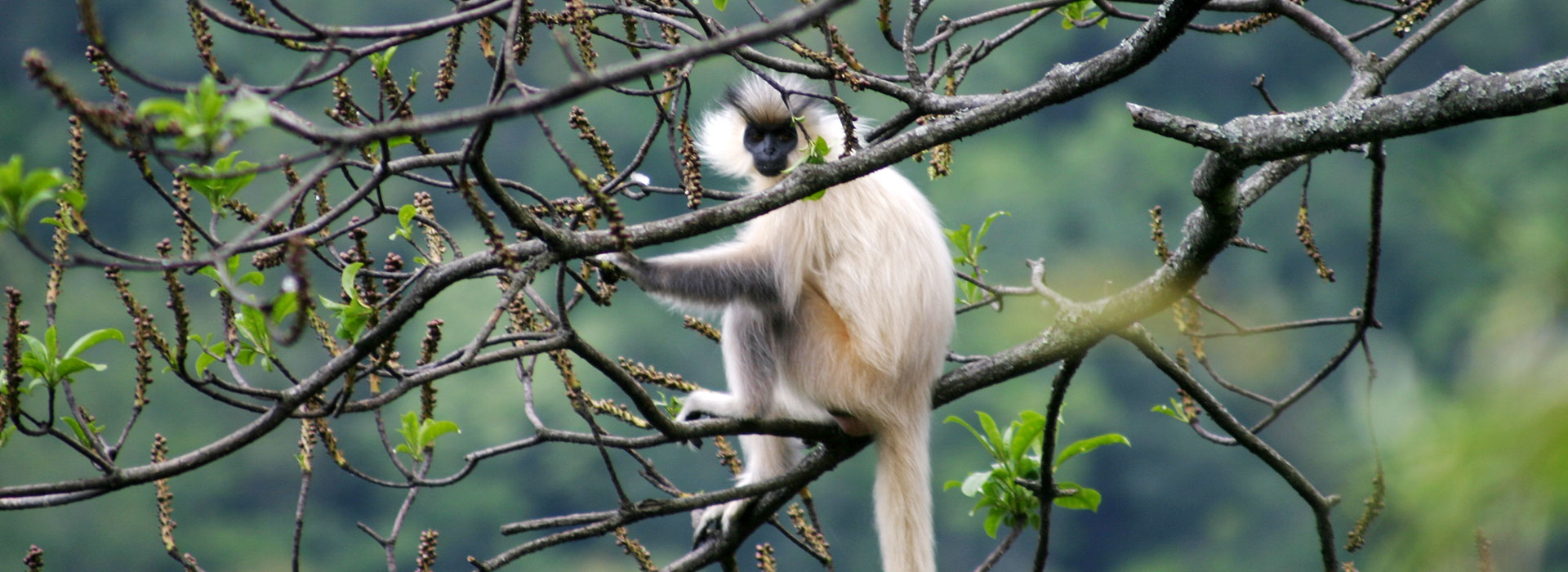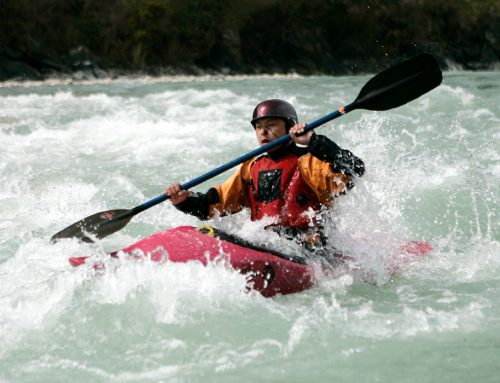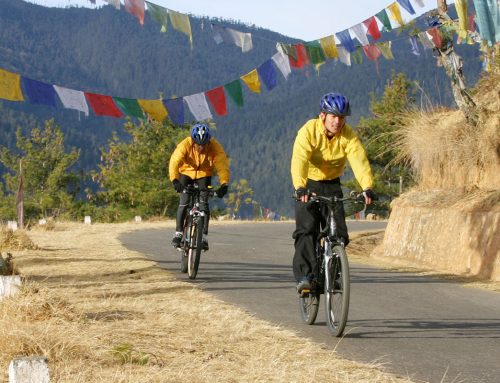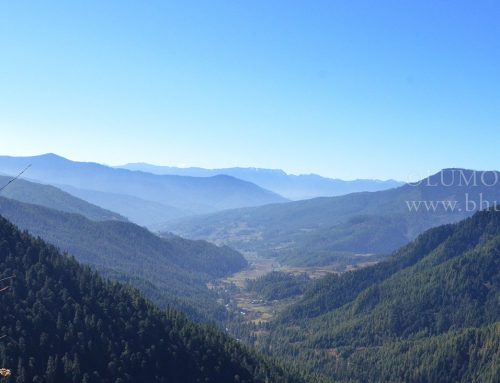Royal Manas National Park is a UNESCO heritage site along with the greater Indian Manas. Ecolodges in the communities within the Sanctuary established to create a partnership for the communities in a give and take scheme to promote conservation efforts is a noble arrangement supported by the WWF and the Forest Services. Ecolodges in five communities stretching from central Bhutan all the way to the east along the erstwhile Gomphu-Manas-Norbugang eco-trail is a haven in the wilderness for a peaceful stay and excellent chances of encounters with a wide variety of flora and fauna. Social engagement, participation in the community activities and cultural experiences can be memorable.
- Demography: Nature Enthusiasts / Explorers / Challenger
- Duration: 7-15 days
- Best to visit: Nov – April
The park’s location and the largely pristine forest, which covers approximately 92% of the area, make the park extremely rich in biodiversity. There are five different vegetation types which consist of tropical monsoon forest, subtropical broadleaved forest, warm broadleaved forest, cool broadleaved forest and evergreen oak forest.
These habitats support a wide range of fauna, including many rare and endangered species such as the Royal Bengal tiger, Asian elephant, gaur, wild buffalo, wild dog, common leopard, black panther, marveled cat, golden cat, clouded
Leopard and Chinese pangolin. Species endemic to the Eastern Himalayan foothills, such as golden langur, capped langur, pygmy hog and hispid hare also occur in the park.
The park is also extremely rich in avifauna and other lower vertebrate and invertebrate fauna. A total of 530 species of birds have been recorded so far, highest among all protected areas. Globally endangered species include the Rufous-necked hornbill and Pallas fish eagle, and 14 other species recorded from the park that are considered to have globally significant breeding populations in Bhutan.
The chestnut-breasted partridge for which there are no recent records outside Bhutan has also been recorded in this richly forested park. In addition, more than 900 species of vascular plants have been recorded in the park. Several of these species have value as cultivars for agriculture crops and other horticultural uses, and a number of others are of immense economic, medicinal, traditional, and religious significance.
Day 1: Gomphu – Pangtang
Gomphu is the first eco-camp located at an altitude of 1457 meters above sea level. Gomphu can be reached from either Zhemgang or Gelephu. From Zhemgang, it takes 3 hrs to reach Gomphu and from Gelephu it takes about 5 hours. The eco-camp at Gomphu is located in the forest just above Gomphu Park Range Office. The facilities include two eco-lodges, two bathroom and toilets, dinning, kitchen, water supply and camping facilities. The facilities are built using local materials such as wood and stone.
The hike from Gomphu to Pangtang can be either along the traditional route which takes approximately four and half hours or along the motorable road, which takes about an hour. The eco-trail passes through mixed broadleaf forests and thick undergrowths with numerous such as barbets, hornbills, bulbuls, doves, wood pecker and cuckoos, see Annexure 4.
Gomphu eco-camp
The traditional route starts with a descent for about an hour and half and ascents for another hour before gentle descent again. The road has well maintained slope and is much easier than the traditional route. One can even ride a bike from Gomphu to Pangtang.
Mamung is the spot where people usually stop for lunch. It is approximately half way to Pangtang. With small settlements in Mamung, fresh oranges are available during winter. The trekking trail actually descents further until Pangtang which is at the level of Mangdi chhu. It is a beautiful valley with settlements and government offices.
Day 2: Pangtang – Shilingtoe
Pangtang lies at an altitude of 239 meters above sea level. The camp is located on the right bank of Mangdi chhu while trekking towards Shilingtoe thus, overlooking Pangtang settlements and the river itself. The trail starts with gentle descent and occasional short climbs. The entire trek will take about four hours and the last leg before reaching Shilingtoe ecocamp is a climb for over half an hour. The trail is very rich for bird watching with many birds such as thrushes, drongos, hornbills, partridges, pheasants, bulbuls, tree pies, barbets, eagles, fowls and many other species, Annexure 4.
Day 3: Shilingtoe to Pangbang
Shilingtoe is located at an altitude of 420 meters above sea level. The camp is on the way to a village and provides a good view of the area due to its location at a higher alleviation. Birds such as bulbuls, barbets, thrushes, hornbills, kingfisher, cormorant, wagtails, trogons and many other species can be seen along the trail between Shilingtoe to Pangbang, Annexure 4. The hike from Shilingtoe to Changazam suspension bridge takes about 3 hours and on the way one can see religious cave, bat cave and a twin waterfall (Lelang). From Changazam, there is a motorable road to Panbang which connects to Indian Manas Tiger Reserve. Besides the services and products mentioned in the Annexure 3, the Powgi lodue which is celebrated by Pangtang community is also celebrated by the Shilingtoe community. Tashibi village which is about an hour walk from Shilingtoe celebrates an annual tsechu on the 14th and 15th day of the 10th Bhutanese month.
Shilingtoe eco-camp, Shilingtoe village
After reaching Panbang, one could also exit via Indian Manas to Phuntsholing or Gelephu or Samdrupjongkhar.
Day 4: Pangbang to Norbugang
The camp site at Pangbang is located at a place called Anilademba at the junction of Mangdi Chhu and Dangme Chhu at an altitude of 160 meters above sea level. It is now connected with motorable road to Panbang which connects to Indian Manas Tiger Reserve.
Twin waterfall near Changazam
Panbang eco-camp
The same road is also one of the entry and exit points into Royal Manas National Park from the Indian Manas. Panbang communities celebrate annual tsechu from 8th to 10th day of 11th Bhutanese month. Various mask dances are performed at the Sonam Choeling Dratsang.
The other attractions at Panbang and Bhutan Manas include boating, river rafting, elephant rides and wildlife watching. The Park Range Office at Manas coordinates these services. While boating and river rafting along the Manas River, one can see goral, capped langurs, cormorants and many other bird species besides the beautiful landscape.
Golden langur in Manas
Boating in Manas river
Norbugang can be reached either from Bhutan Manas or from Nanglam under Pemagatsel Dzongkhag. The trek between Pangbang- Norbugang will take approximately six hours and is the longest trek of all. Most of the birds sighted along the Shilingtoe-Pangbang eco-trail are also found along Pangbang-Norbugang eco-trail. The eco-camp at Norbugang is located at a place called Dorji Jadram. The road from Nanglam to Pangbang has reached till Tsheshengzor, with another two and half hours walk to the camp.
This road is also one of the entry and exit points to reach Royal Manas National Park. The five villages along the trail from Nanglam to Norbugang conduct Tsechus and among them the Tsechu at Nimshongborang village is unique and entertaining. It is held annually from 8 to 10th day of 5th Bhutanese month and from 9 to 10 day of 8th Bhutanese month.
After Norbugang, one could also exit via Nanglam and Samdrupjongkhar
- All Meals [Breakfast /Lunch/Dinner]
- Accommodation [Twin Sharing] Single Room Supplement Extra US $: 40 per room per night.
- All transportation within the country including airport transfers.
- Royalty & Govt. Taxes
- Entrance fees for Museums and Monuments only
- Visa Fee.
- Airport tax
- Tourism Development fund
- Sightseeing
- Druk Air fare.
- Insurance Premiums,
- Payments for service provided on a personal basis
- Cost for any services not mentioned in the “Cost Include head”.





